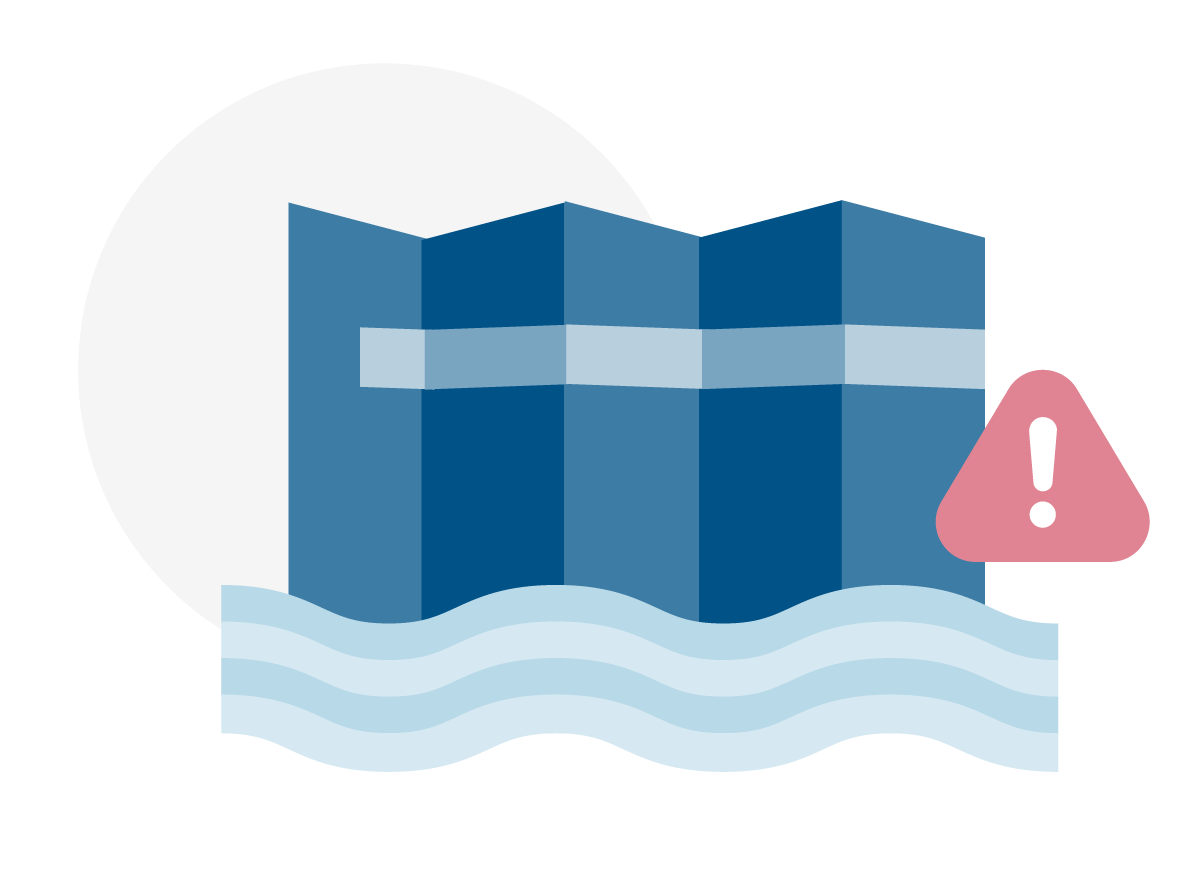
Floods are unpredictable. Because flood risk is always changing, communities use tools to understand their risk and take actions to protect their families, homes and businesses.
Floods occur naturally and can happen almost anywhere. They may not even be near a body of water, although river and coastal flooding are two of the most common types. Heavy rains, poor drainage, and even nearby construction projects can put you at risk for flood damage.
Flood maps are one tool that communities use to know which areas have the highest risk of flooding. FEMA maintains and updates data through flood maps and risk assessments.
Flood maps show how likely it is for an area to flood. Any place with a 1% chance or higher chance of experiencing a flood each year is considered to have a high risk. Those areas have at least a one-in-four chance of flooding during a 30-year mortgage.
Floods don’t follow city limits or property lines. Using a flood map, you can see the relationship between your property and the areas with the highest risk of flooding. There is no such thing as a “no-risk zone,” but some areas have a lower or moderate risk.
How to View and Obtain Flood Maps
The FEMA Flood Map Service Center (MSC) is the official online location to find all flood hazard mapping products created under the National Flood Insurance Program, including your community’s flood map.
Using Flood Maps
Flood maps help mortgage lenders determine insurance requirements and help communities develop strategies for reducing their risk. The mapping process helps you and your community understand your flood risk and make more informed decisions about how to reduce or manage your risk.
For information on flood insurance, contact Lallis and Higgins Insurance.

